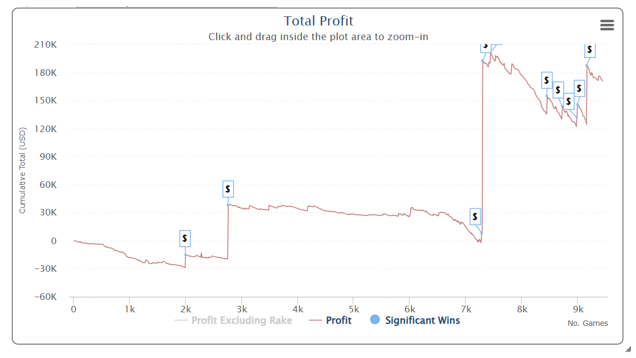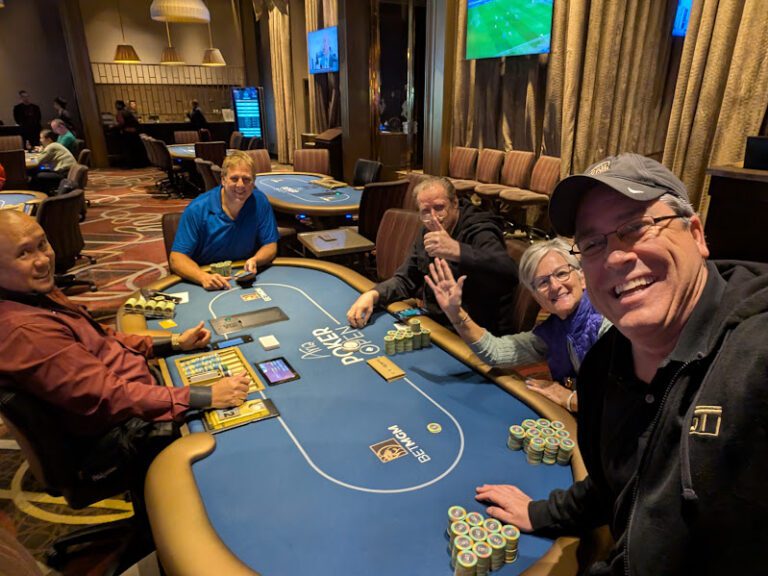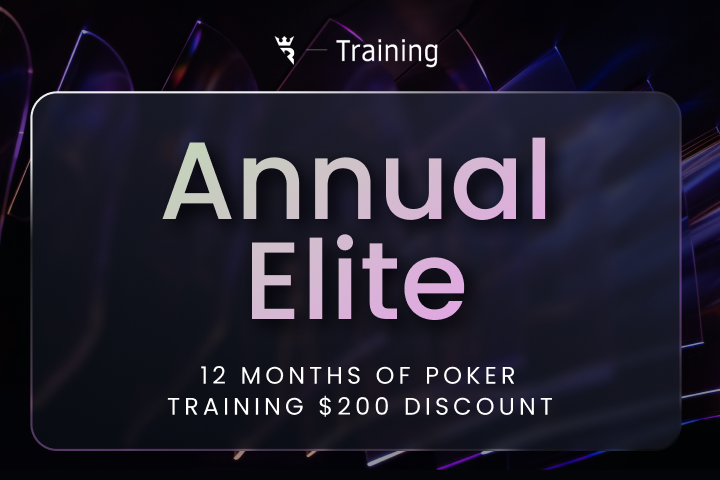If the Becker vs. Tice 2024 WSOP crossbook results provide any hints of what to expect in live MTTs, it’s that tournament poker variance can mean prolonged pain. Consummate pros understand that playing perfect poker day in and out can still result in several year-long breakeven stretches, and more commonly result in net losses; i.e., long MTT downswings. Most live poker series you play will be losing ones. This is hard to stomach for the working class recreational player shot-taking a few bucket list value events like WSOP’s $1500 Monster Stack or Millionaire Maker, an $800 Deepstack event, or the $400 Colossus.
Many online professionals manage to bob and weave their way to making a living playing the game despite the increasing game security risks due to technology advances. They then take their hard-earned profits and donate their winnings to the glory chase that is live tournament poker, turning their winning year into a breakeven, losing or small winning one. I did this during 2023’s WSOP, going 0 for 42 in cashes including tournaments and satellites after my largest online score. This experience of prolonged loss is part and parcel of MTT poker. It comes with the territory.
How do you recover from a rough series; from a long MTT downswing? How do you keep going after several bad ones? Fortunately, while we can’t ultimately control outcomes, there are things we can control.

MTT Downswing: Setting Proper Expectations
Nearing the end of the WSOP this year, I went to play the last flight of a $1600 event at the Venetian. Failing to get there early meant I was an alternate and wouldn’t get seated for four or so levels. While waiting, I ran into a friend of mine who had just busted this event. He was fuming, countenance falling. Face red, shaky voice, clear signs that his cortisol levels were spiking. This to top off another losing live series for him. A few years ago, he had final-tabled a significant buy-in event and it looked like his career was about to blossom. But ever since, it has been disappointment after disappointment, buy-in after buy-in.
Most recreational players and even many regulars grossly underestimate variance, skewing their expectations. Expectations go unmet, making the bustouts feel worse. As these results pile up, so do the anxiety, frustration and depression. It is normal to feel sadness due to losses. However, if we can better approximate the length of time and volume necessary to realize any edge or ROI in the games we are playing, we can reduce the impact of outcomes on our mental health. What kind of variance is reasonable to expect?
To better understand, let’s look at a winning online player’s Sharkscope graph for all sites played.

His lifetime ROI is approximately 28%. He is up just under $180K on trackable sites. However, this is over 9,000 games, approximately two years worth of playing full-time. Look closely and see that after their second major score around game 2,800, they go on a breakeven to losing stretch until game 7,100. That’s a lot of grind to put in without seeing any results. Now, these are in the online environment where fields are tougher and thus, edges lower. Mass-tabling so that you put in 40 games a day helps an online player realize their edge sooner. And while in live MTTs, we can expect shorter breakeven and losing stretches since fields are softer and edges higher, live players suffer a significant volume disadvantage.
A live recreational player has a job, a family, friends, and bankroll considerations keeping them from playing live tournaments every single day of the year. A live poker tournament takes one or more full days to run into completion. So while an online player might blast through a 100-game downswing in a week or two, a live player will have to play two to three years worth of tournaments in order to “catch up”. The above graph shows us that it could be a while before a skilled player sees any fruit for their labor. This will dishearten the impatient but be helpful to the lovers of the game. My advice to live players is to think in terms of multiple years, not series, when thinking about outcomes. This change in perspective will reduce the sting of each loss and help you focus on what’s most important: execution at the tables.
READ MORE: Red Chip Poker’s MTT 3-Bet Shoves Crash Course Review
Focus on Poker’s Hard and Soft Skills
With poker playing skill being equal, soft skills will heavily determine a player’s long term success. Soft skills in poker include things like mental game, physical fitness, and bankroll management.
Work on Your Mental Game
A player who is after consistent positive results will need to bring a consistent level of gameplay. Having a solid mental poker game will mean a higher tilt threshold than your opponents, if prone to tilt at all. It will mean showing up to play your best poker versus your third-best poker on a regular basis. It means that when those major opportunities come up, you are able to in-game execute everything you have studied and trained for until that moment.
Improved Physical Fitness
Closely related to mental game, your physical fitness has a big impact on your mental performance. Imagine you’ve made it late into Day 2 of a 3-day event. Along with you, everyone remaining has also been sedentary and experiencing some amount of fatigue. Your physical fitness will in no small way help you maintain energy and focus as you look to bag and progress towards Day 3.
Better Bankroll Management
You might be an amazing card player but if you always sit down with your entire roll, it’s only a matter of time before you get crushed for the lot. Thus, while bankroll management isn’t a part of playing poker, it is a major component in the longevity of a poker player’s career.
Each of the aforementioned soft skills will help in managing long-suffered losing stretches. This is not an exhaustive list as study, game selection, networking and others also come to mind. All in all, these soft skills contribute to a better experience, and if fortunate, better outcomes. Conversely, failing to work on them can have an adverse impact so take care to tend these areas and work on them. Control the controllables.
We can’t control our downswings but we can worsen them. And it’s super helpful to keep in mind that if there are downswings then there are also upswings.
Upswing incoming. One time.







